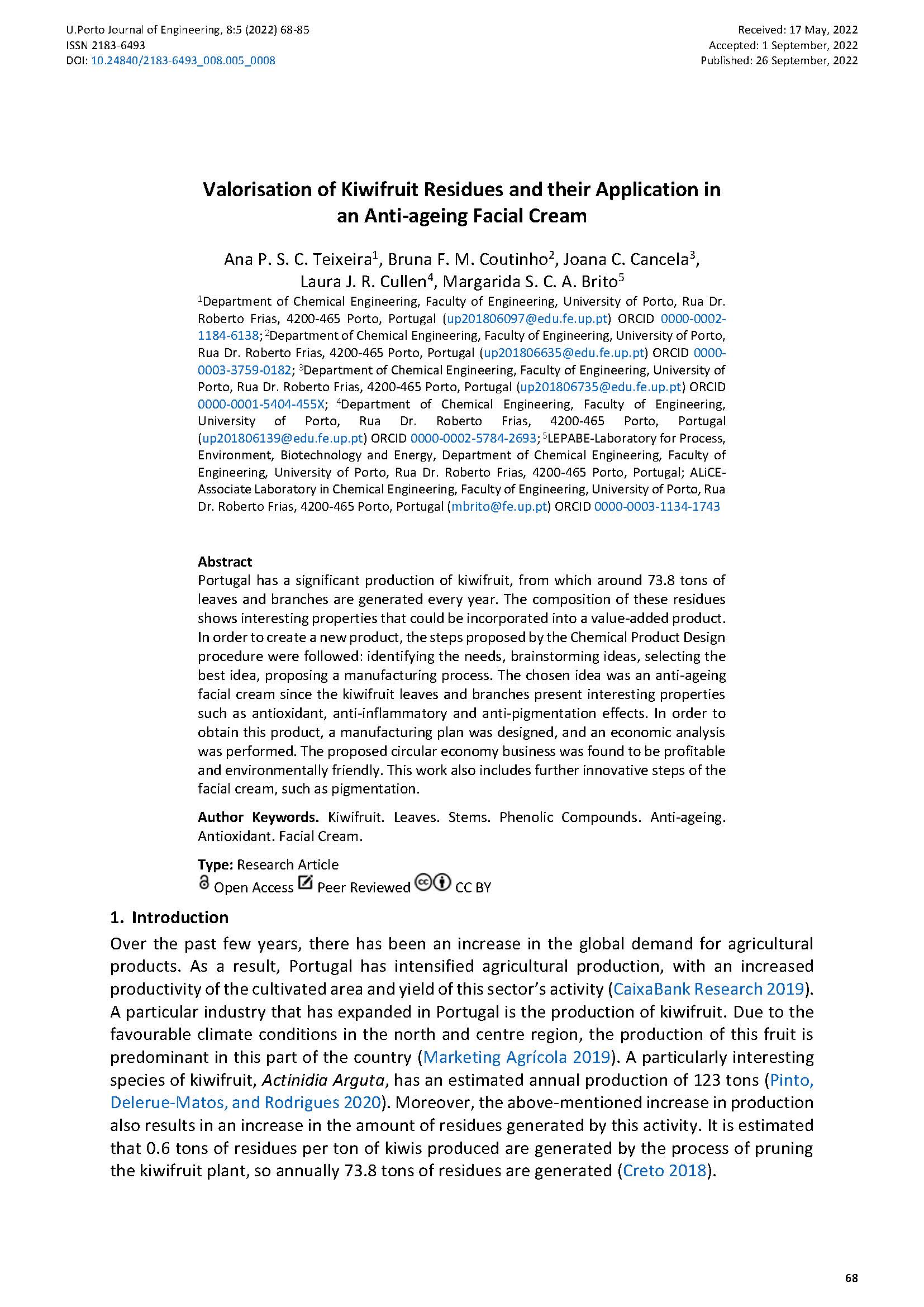Valorisation of Kiwifruit Residues and their Application in an Anti-ageing Facial Cream
Main Article Content
Abstract
Portugal has a significant production of kiwifruit, from which around 73.8 tons of leaves and branches are generated every year. The composition of these residues shows interesting properties that could be incorporated into a value-added product. In order to create a new product, the steps proposed by the Chemical Product Design procedure were followed: identifying the needs, brainstorming ideas, selecting the best idea, proposing a manufacturing process. The chosen idea was an anti-ageing facial cream since the kiwifruit leaves and branches present interesting properties such as antioxidant, anti-inflammatory and anti-pigmentation effects. In order to obtain this product, a manufacturing plan was designed, and an economic analysis was performed. The proposed circular economy business was found to be profitable and environmentally friendly. This work also includes further innovative steps of the facial cream, such as pigmentation.
Downloads
Article Details

This work is licensed under a Creative Commons Attribution 4.0 International License.
Authors who publish with this journal agree to the following terms:
- Authors retain copyright and grant the journal right of first publication with the work simultaneously licensed under a Creative Commons Attribution License that allows others to share the work with an acknowledgement of the work's authorship and initial publication in this journal.
- Authors grant the journal the rights to provide the article in all forms and media so the article can be used on the latest technology even after publication and ensure its long-term preservation.
- Authors are able to enter into separate, additional contractual arrangements for the non-exclusive distribution of the journal's published version of the work (e.g., post it to an institutional repository or publish it in a book), with an acknowledgement of its initial publication in this journal.
- Authors are permitted and encouraged to post their work online (e.g., in institutional repositories or on their website) prior to and during the submission process, as it can lead to productive exchanges, as well as earlier and greater citation of published work (See The Effect of Open Access).

